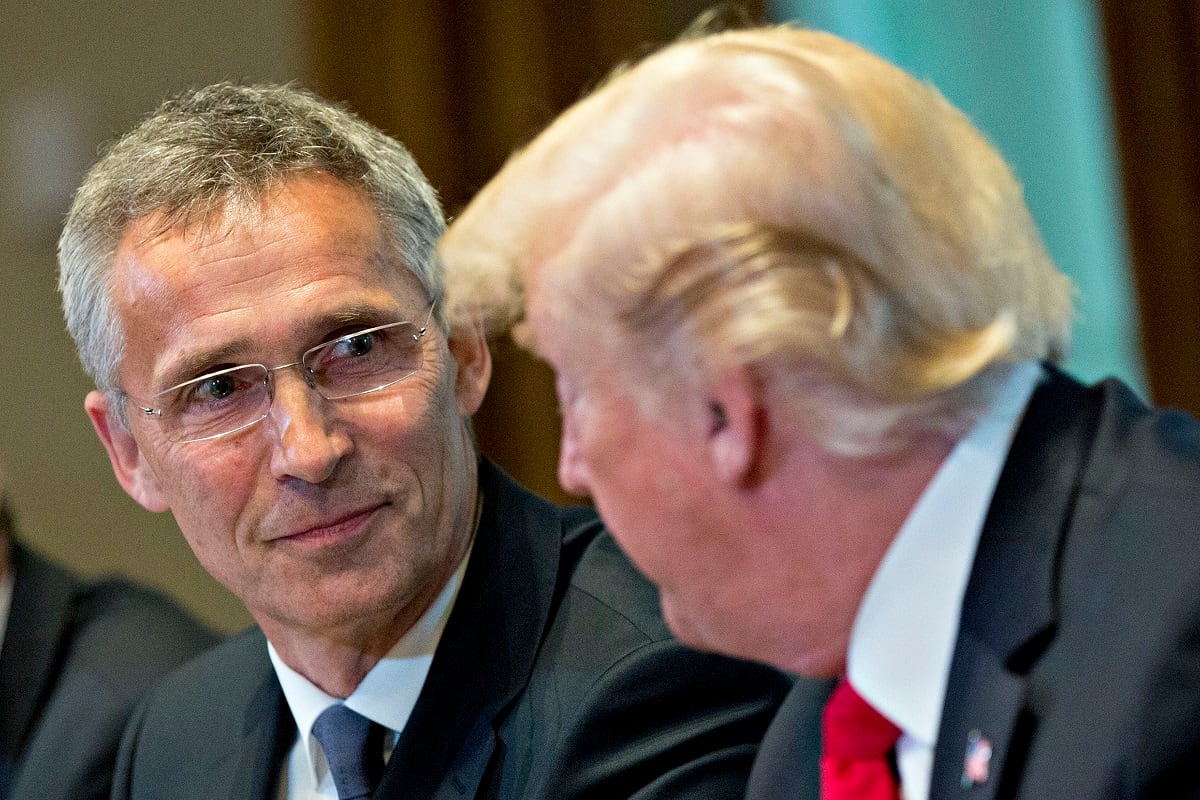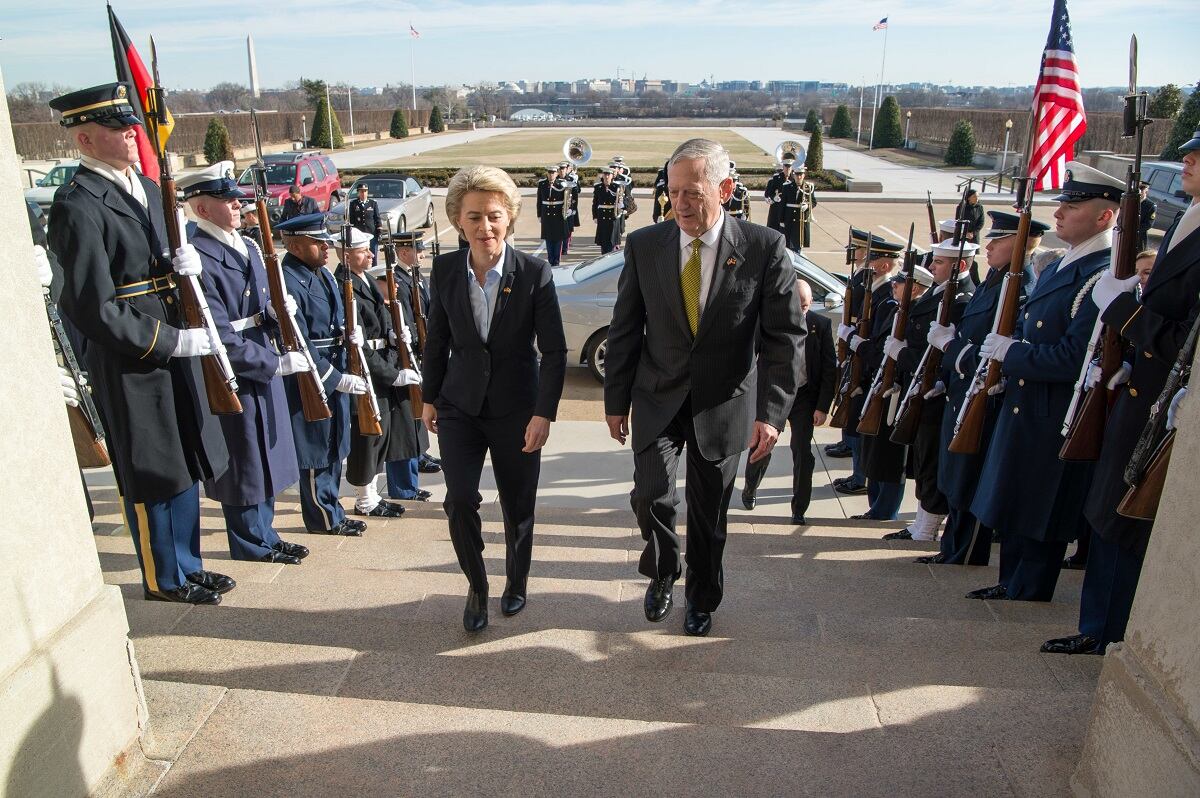NATO has dealt successfully with its burden-sharing problem before, and it can do so again. History shows that the pressure U.S. President Donald Trump is placing on key allies could have a positive impact if he does not overplay his hand at the Brussels summit.
In 1970, the relative defense expenditures of the United States and Europe were proportionally roughly what they are today. Europe spent only about 45 percent as much on defense, as did the United States. The U.S. was in the midst of the Vietnam War, which drove U.S. defense spending well above previous levels. The burden-sharing imbalance then was one of the largest in NATO’s history.
But the decade of the 1970s saw a dramatic increase in European defense spending of about $80 billion (in constant 2011 dollars), roughly comparable to the growth President Trump is now demanding. By 1980, Europe was spending about 76 percent as much as the U.S. on defense ― a massive improvement.
Three factors contributed to this remarkable growth.
First, Russia was becoming more belligerent. The Brezhnev Doctrine was announced in November 1968, which was designed to forcefully crush anti-communist movements in other communist countries. Soviet military spending increased, and the country began to introduce the SS-20 intermediate-range nuclear-tipped missile, which directly threatened Europe.
Second, the United States appeared to be less reliable. Washington was focused on ending the Vietnam War, and the second half of the decade saw U.S. defense cuts and retrenchment under President Jimmy Carter. To stimulate European defense spending, Senate Majority Leader Mike Mansfield proposed amendments to withdraw U.S. troop from Europe.
And third, European economic growth averaged about 3 percent, enough to afford spending increases.
All three factors are present again today. Russian aggression in Georgia, Ukraine and Syria have already stimulated a surge in European defense sending. President Trump’s threats are not dissimilar to those of Mike Mansfield. And Europe has overcome much of the recent recession with growth at 2.4 percent in 2017, the fastest pace in decades.
By the end of the Cold War, European defense spending was at about 2.5 percent of gross domestic product. U.S. and European defense spending fell during the decade of the 1990s, with both sides of the Atlantic taking a peace dividend. The burden-sharing balance by 2000 was equitable, with Europe contributing 78 percent as much as the U.S.

Then the U.S. was attacked on 9/11. President George W. Bush drove U.S. spending from 3.3 percent to about 5.3 percent of GDP to finance trillion-dollar wars in Iraq and Afghanistan. While the European allies contributed significantly to operations in Afghanistan in particular, they continued to take their peace dividend. Their defense spending sank to 1.6 percent of GDP by 2013.
So today’s disparity, as was the case with the Vietnam War, flows at least partially from the fact that the U.S. was fighting wars outside of Europe.
The 2014 NATO summit in Wales turned the European decline around with the commitment by heads of state to seek to spend 2 percent of GDP on defense by 2024. Defense cuts have been reversed everywhere. The number of allies to meet that 2 percent goal has risen from three to eight in the past four years. More than 16 have clear plans to attain the goal by 2024.
In addition, NATO Secretary General Jens Stoltenberg has usefully broadened the definition of burden-sharing to include not only “cash,” but “capabilities and commitments.” Capabilities will flow from the NATO agreement to spend 20 percent of defense on new equipment. In this, 19 NATO countries are at or near the target. Enhanced capabilities will also flow from the new readiness initiative, which will be agreed upon at Brussels.
European commitments have been clearly demonstrated in Afghanistan, in the war against ISIS and with new forward deployments in the Baltic States.
There are still problems that President Trump has tried to address by writing letters to those allies who are unlikely to meet the 2 percent goal. The effort was excessively blunt, but it did address the remaining issues.
The largest problem by far is Germany, which currently spends less than 1.3 percent of GDP on defense and is unlikely to go much beyond 1.5 percent. Germans raise a series of reasons for their unwillingness or inability to meet the agreed target. They have domestic coalition problems. They would have difficulty absorbing all of that defense spending efficiently. They spend more than others on official development assistance to stabilize threats. They do not want to reward Trump. What would their neighbors think given their World War II history?
None of these reasons are convincing.
RELATED

How should President Trump maximize his efforts at the summit to deal with those whom he calls “free riders”? He has actually set the stage to declare a victory. But if he pushes too hard and disrupts the unity and cohesion that summit planners seek to attain, it will backfire. NATO can not afford a broken summit as happened at the recent G-7 meeting.
Trump’s best tactic is to recognize that burden-sharing is not only a trans-Atlantic problem. It is also a European problem. About half of the allies plan to live up to their spending pledge, while the other half does not. The half will let down not just the U.S. but its own European neighbors. That should be Trump’s message.
If handled with some dexterity, the factors now at work should yield results similar to those of the 1970s. Overreaching will just create confusion and disunity at a time when the alliance needs to show strength in the face of tough challenges from the east and south.
Hans Binnendijk is a senior fellow at the Center for Transatlantic Relations at Johns Hopkins University. He previously served as the National Security Council’s senior director for defense policy and as the director of the Institute for National Strategic Studies.







